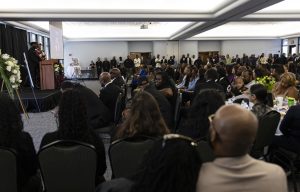Limited learning in first two years of college, recent study shows
January 30, 2011
A recent study shows that almost half of the nation’s undergraduate population shows no significant gain in learning in the first two years of college. Students and administrators at Sacramento State have varying views on these statistics.
The research is based on a book titled “Academically Adrift: Limited Learning on College Campuses” by Richard Arum, a New York University professor, and JosipaRoksa, an assistant professor of sociology at the University of Virginia.
Arum was contacted for comment but declined an interview due to a large number of media requests.
Findings of Arum’s study are based on student scores on the Collegiate Learning Assessment, a standardized test that examines students’ critical thinking, analytical reasoning and writing skills. More than 3,000 full-time students on 29 campuses were tested. Analysis of student transcripts and surveys was also included in the research.
The research shows that after two years in college, 45 percent of students demonstrated no significant gains in learning. After four years, the statistics drop to 36 percent of students showing no significant gains.
The study blames these statistics on instructors who focus more attention on their own research than on teaching classes.
Kimo Ah Yun, chair of the Communication Studies Department and former director of the Center for Teaching and Learning, said these numbers are more reflective of student effort than instructors.
“One of the interesting things about the findings is that students who seek out classes that are more challenging and require them to do more writing and require them to do more reading do better on the(College Learning Assessment)than students who don’t,” Ah Yun said. “You’re going to get out of your education what you put into it.”
Katie Anderson, a junior social science major and aspiring high school teacher, considers it to be the instructor’s responsibility to make sure students retain information.
“If I have a really passionate professor that knows a lot about their subject and wants to come to class and wants to help the students there, then I will retain everything because I know that the teacher or the professor is in it for my learning and not because it’s just a job. He’s not just showing up to get a paycheck,” Anderson said.
The research also shows that students in certain areas of study show higher gains in learning than others.
“(This) makes sense because liberal arts students in their classes are more likely focusing on building their critical and analytical thinking skills and writing skills, whereas majors outside of liberal arts might focus more on their content specific items within their major, ” Ah Yun said. “Since the test only focuses on specific areas… students could still be gaining something but the test just isn’t picking it up.”
Although the research in this study may not necessarily reflect the students at Sac State, Ah Yun said this information can be used to access how student learning can be improved at Sac State.
“Clearly, faculty have to review their curriculum and start thinking about changes that they can do, because clearly 45 percent is too high of a number. Something needs to be done to close that gap,” Ah Yun said.
Alex Geiger, a senior philosophy major, attributes the research statistics to non-academic factors.
“The first two years of college are kind of celebratory, like, “Alright! I’m finally out of the house, away from my parents, I’m on my own with all the beer I could ever want to drink’ so it’s not too terribly surprising that freshmen and sophomore year wouldn’t be too productive just because, you know, people are too busy celebrating,” Geiger said.
Arum’s study also surveyed the study habits of college students and found that students who study independently do better academically than those who study in groups.
“It kind of makes me grin because I hate collaborative study and the fact that now there is a study that backs me up, I get to rub that into the collaborative professors faces and say, “Ha ha I was right all along,'” Geiger said.
Other details in the research:
* Students spend 50 percent less time studying compared with students a few decades ago.
*Thirty-five percent of students report spending fewer than five hours per week studying independently.
*Fifty percent of students said they never took a class in a typical semester where they wrote more than 20 pages.
*Thirty-two percent of students never took a course in a typical semester where they read more than 40 pages per week.
Inna Gritsak can be reached at [email protected]
























































































































